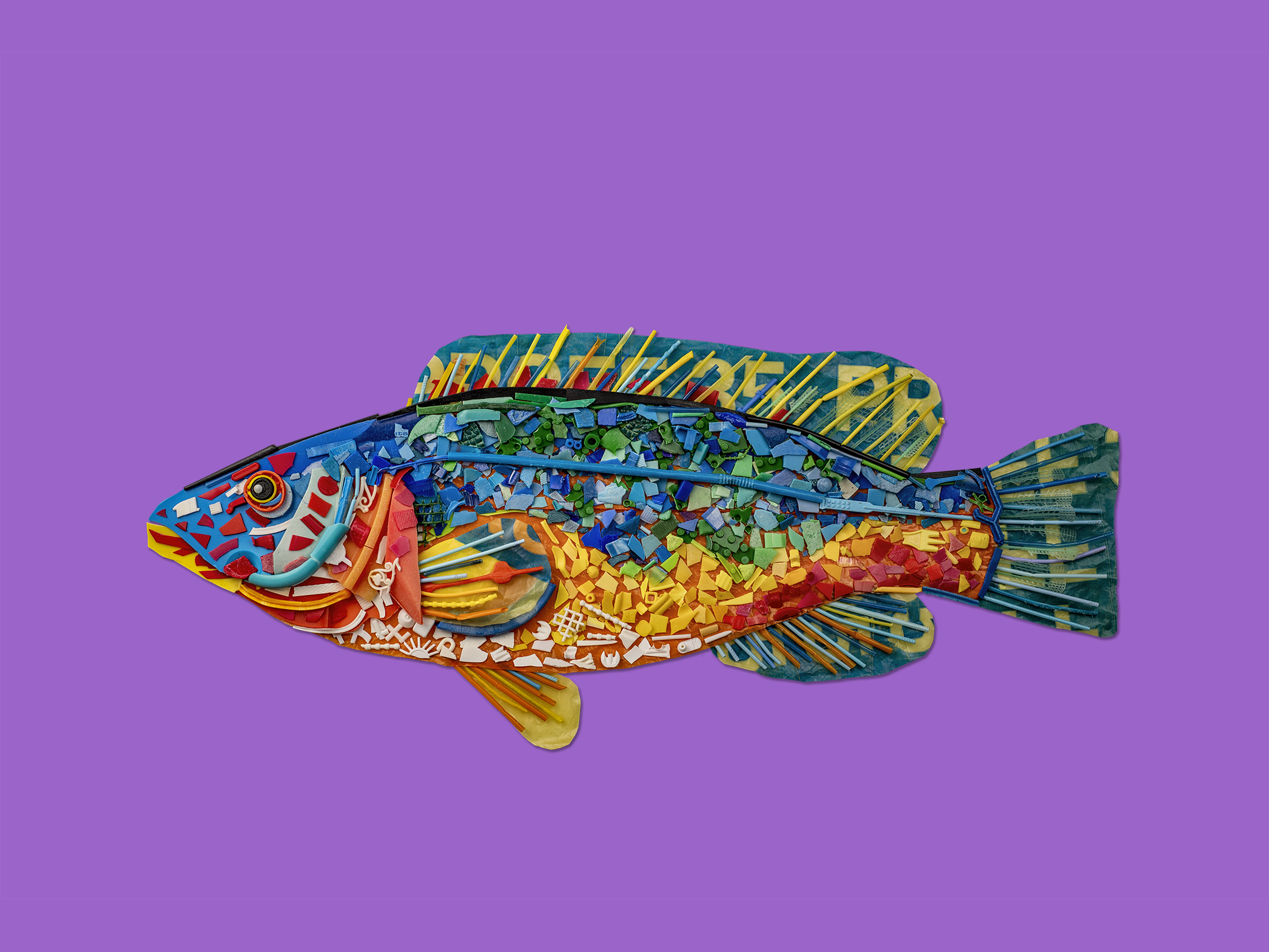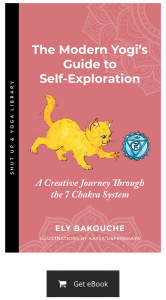There are a lot of things that need to be changed in our world—the way we eat, consume, work, use natural resources, relate to each other, relate to our earth, approach illness, or even navigate stress and emotions. I don’t know that there was a time when all these things were in order, when all of us could enjoy fulfilling lives that didn’t impact each other or our dear planet in damaging ways. In fact, despite all the monstrosities and nightmares fellow humans and our home are experiencing at the moment, things in the world seem to be better than they’ve ever been—take it from Bill Gates.
One of the ways our big human community can continue heading in a positive direction is through global movements our worldwide connection makes possible: the magic of the internet, social media, and the movement of goods, services, and people allow us to share more common grounds than ever, to experience similar issues, share about them, and, more importantly, challenge their existence—together.
Yoga communities, by creating and offering safe, open, and grounding spaces make it possible to discuss heavy topics, invite reflection, and digest the emotional turmoil that comes with facing an ugly reality—especially when that reality pushes us to check in with our very actions and how they impact the world around us. If meditation brings the necessary clarity to contemplate the big questions, then what better place than at the yoga studio, on yoga Instagram accounts, or at yoga events to discuss one of the biggest issues of the early 21st century—plastic pollution?
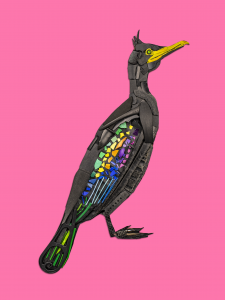
Today, I’m using the online space our dear magazine offers to tell you about the plastic soup our oceans have become and the biggest, most innovative initiatives taken to date to clean our mess up.
The good news? There are lots of organizations and individuals trying to rid our planet of plastic, among them Plastic Free July, to help you take action too.
What’s Plastic Free July?
Plastic Free July is now a non-profit organization, but it started as an Australian campaign to raise awareness on plastic waste and invite individuals to change their behaviors in an effort to limit it. Now, during the month of July (and ideally beyond that), individuals, businesses, communities, and schools all over the world are encouraged to limit single-use plastic as much as possible in order to avoid adding to the mountains of plastic piling up in the ocean and on our earth.
Since 2011, this initiative has made the overwhelming task of switching to a zero or low waste lifestyle much easier by encouraging millions to jump on the zero-waste train every year and showing them how doable it is.

Below, you’ll find some facts on plastic waste and its impact on our planet–wildlife, humans, and our economy alike. You can also jump directly to the “How to Prepare for Plastic Free Life” section, which gives some tips to ready yourself for the commitment, or the “Ten Commandments of Plastic Free Life” section which features a list I’ve come up with to make the feat a little more playful and amenable. Finally, don’t forget to check out the last section, Resources, for articles, videos, documentaries, and Instagram accounts to keep learning about the issue.

Why Do It
Since 2016, we’ve been generating an annual waste record of about 2 billion tons, a number that is bound to increase by 70% over the next 30 years, according to the World Bank.
The biggest landfill to date, although not properly land, is the Garbage Patch off the coast of California, located in the Pacific Ocean. It’s a massive accumulation of –get this– 1.6 million square kilometers (about 617 thousand square miles), or 3 times the size of France (about 2.5 times the size of Texas) of trash.
The Garbage Patch off the coast of California, in the Pacific Ocean, is a massive accumulation of 1.6 million square kilometers, or 3 times the size of France, of trash.

There are currently 80,000 tons of plastic in that ocean patch alone. We talk a lot about the issues climate change will lead to, but the Garbage Patch is already a major environmental disaster given its present and future impact on marine life as well as human life. In regards to marine life, plastic can easily be mistaken for food, which tricks sea animals into ingesting toxic pieces that are harmful and potentially deadly. Fishing nets account for 46% of the Patch; animals get stuck in them and never find their way out. And once plastic enters the marine food chain, it enters our plates and our bodies too. During their two-year study of the Garbage Patch, researchers found high levels of harmful chemicals in the mass; chemicals that humans are not immune to.
Besides waste being a problem in itself, the costs of production have an impact on our resources as well, both natural and economic. Looking for the hashtag #MovetheDate on Instagram, you’ll find information on “Earth Overshoot Day,” the day we’ll have used the natural resources our earth can renew in a whole year. In 2019, the world overshoot day is August 1st, and every year it happens earlier. To produce plastic, we use tremendous amounts of energy and natural resources, namely fossil fuels, that can easily be avoided if we at least limit our consumption to what is reusable.
We don’t need to be mathematicians to understand that the more we manufacture, the more we use. And the more we use, the more trash we make and the more energy we lose. Plastic waste has been a major economic drawback, costing us 13 billion USD per year, and that doesn’t even take into account the money spent to make non-reusable goods such as coffee cups, plastic straws, take out boxes or even toothbrushes and shampoo bottles.

Reducing and even eradicating single-use plastic and plastic goods with short-term life expectancy is not only good for the planet, but it is also absolutely necessary. Right now, 30-40% of global waste is produced by high-income countries combined (such as the US, Denmark, Hong Kong, New Zealand), a quarter by the Pacific and East Asia, and in the next 30 years, projections show that Sub-Saharan Africa and South Asia will double or even triple their waste generation. Even if we optimize recycling systems and find ways to get rid of that waste, the way we currently treat and dispose of it generates about 5% of global carbon emissions (excluding transportation). [World Bank]
Bag It, the documentary, tells the lives of plastic bags once they make it to our home trash cans.
There you have it: plastic waste has tremendous effects on animals, humans, our dear planet, and even our economy. Although developing smart ways for plastic recycling would help get rid of it, the fastest way to do so is to eliminate it altogether; immediately.
How to Prepare for a Plastic Free Life
The pledge is simple: you “choose to refuse“ single-use plastic. You can visit the Plastic Free July website and ask for a little hand, clicking the “take the challenge” button to receive their weekly tips and tricks, even if it’s not July. When you sign up, you can let them know where you’d like to make changes (i.e. “at school” or “getting started”) and how you want to participate (avoid single-use plastic packaging, target takeaway items, or go completely plastic-free). You can also opt to try it for only a day, a week, the whole month, or make the indefinite commitment to become completely plastic-free. Draft yourself a little note with all the tips they send, hang it in your kitchen, and get excited!

Ideally, you’ll prepare mentally as well. Here are a few questions you can ask yourself, discuss with the people you share a home with, bring into your conversations with friends, or explore in your journaling practice:
- What do I expect from this challenge?
- What might be the most difficult thing to do? How can I overcome these potential obstacles?
- What might be the easiest task?
- Why do I care about going plastic-free?
- How can I bring a little playfulness into the feat, even if it might feel overwhelming at times?
- Do I want to share my decision with others? If so, how?
If it helps, you can even visualize yourself staying committed and successfully making it to the end of the month with your goal(s) achieved.
The Ten Commandments of Plastic Free Life
1. In non-reusable cups and bottles you will not drink.
If there was one thing you could do during the month of July and beyond to decrease your plastic waste, it would be getting yourself a reusable coffee cup and water bottle. And make sure you start using them, don’t just let them gather dust on the top shelf of your kitchen cabinet.
Have them with you at all times–in your car, in your bag, in your suitcase. Not only will you be saving on dozens of cups of non-reusable cups and bottles every week (month, year, etc.), but it will make increasing your daily water intake much easier.
One word of warning: depending on where you live, you might feel a lot of resistance when you kindly ask for the barista to pour your precious coffee into the cup you give them. They might throw angry looks and frustrated utterances. This is where your meditation can come in, dear modern yogi; everyone’s allowed to be angry that their job is being disturbed by some silly trend that makes the habits that once upon a time changed our lives for the better (or rather, easier) obsolete.
Other items you should consider getting: reusable cutlery, straws, chopsticks, lunch boxes, a picnic attire, shopping bags, tea infuser… And anything else you tend to eat in and then throw out.
2. Your take-out habit you will limit.
This probably doesn’t come as a surprise; our take-out habits are quite the planet destroyers. Every time you limit ordering out, you reduce the amount of plastic waste your household generates. Incidentally, you might also be avoiding meat, fish, or dairy consumption and preservatives restaurants and fast foods use–an extra good deed for your health and the planet. Did you know the meat industry plays a major role in greenhouse gas emissions with a total of about 14.5% of global emissions? (Grossi et al) Well, now you do!

Another option is, of course, to get to that sushi or burger place you love so much with your box and bags and ask them to put everything in there. Like with the coffee cup, they might throw you angry looks, but what would you rather get? Angry looks or sushi full of plastics the fish mistakenly took for plankton?
3. Your packaged goods consumption you will shrink.
Especially those to be bought and consumed in under 15 minutes. Think water bottles, of course, but any kind of soda or drink; think premade food found in the fridges and freezers of the supermarket; think candy and granola bars—and yes, the healthy kind leave as big of a trace as the sugar-and-palm-oil-filled ones.
Whenever possible just make your own food, but if you can’t be bothered to make your own tomato sauce (I can’t blame you), get the premade food that comes in a glass container. The trick is then to keep that container to repurpose it–use it as a storage box for leftovers, a vase for fresh flowers, or a container for dry food.
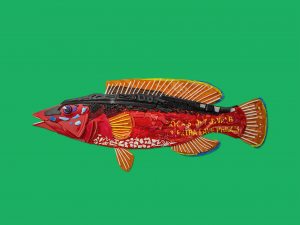
4. The bulk section you will visit.
Wondering how you can get your rice or nuts if you have to stop buying them in packages? Look for the bulk section of the supermarket. That’s where you’ll find all sorts of dry food stored in self-serve containers. You fill your own boxes up with what you need; they even have flour, chocolate chips, and dried fruits!
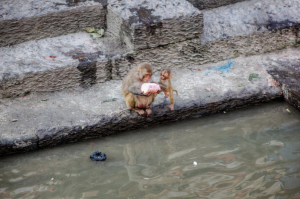
Supermarkets and grocers have plastic bags and boxes available at the bulk section but, obviously, do not use those. Use glass containers you saved (wink) or Tupperware containers. Ask the cashier or go to the scale to weigh them and subtract that number when you get to checkout. You can also purchase mesh reusable produce bags that work perfectly for bulk nuts, dried fruits, and the like.
Once again, depending on where you live, this might prove to be a challenge in and of itself. Western European countries and Canada tend to be the easiest places to shop package-free—I hear Bulk Barn even have nut butters in bulk! And if you live in the US, your chances are higher at Whole Foods, where you most definitely need bucketloads of patience to explain to the cashier that no, you can’t use the plastic bags they provide and fill up your containers at home; that defeats the whole purpose.
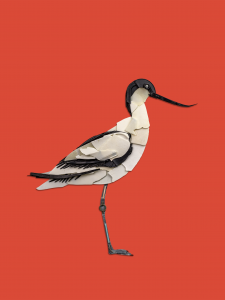
5. Dishes you will see more in the sink.
Limiting take out not only means you’ll have to use proper dishes, but it’ll also mean cooking more. Avoiding packaging means you won’t have anything to throw into the oven or that you grabbed on the way home at the end of a long day.
Take this opportunity to appreciate the process that is cooking. Get curious about what makes a dish tasty, how food combinations work, and how you feel mentally when you take time to wash your salad, dry it, and prepare it instead of having it ready from the plastic bag into your bowl. Your fridge will likely be more colorful since you’ll be forced to buy fresh produce and won’t be able to rely on food that’s already made for you.
Tip: Choose glass containers whenever possible and keep them to use them as storage later on.
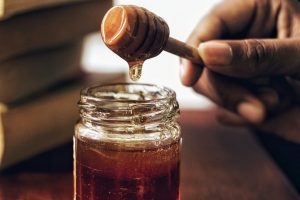
6. A backpack you will need, and a tote bag you will carry in it.
The easiest way to limit plastic waste in general, as you might have realized, is to come prepared–like in the good old times when we didn’t let ourselves be swamped with work and got home to an empty fridge, or when everyone took their time to sit down and sip on their morning coffee. When you leave for the day, a backpack becomes your best friend: you can fit your water bottle, coffee cup, lunch box, mesh bags in case you need vegetables or fruits on the way home, and a tote bag if you’re planning on buying, well, anything really!

7. No’s you will utter in a blink.
If we paid a little more attention to our surroundings and our shopping experiences in general, there’s a lot of plastic we could avoid using. In the US, any restaurant will typically bring your glass of water to the table with a straw. If you forget to mention you’re having your coffee to stay, it’ll automatically be poured in a plastic (or plastic-lined) cup. Any other store will give you a bag, even if you only have a tiny lipstick or a pair of socks to put in it.
Get into the habit of simply saying no to these things. No straw, no bag. It’s a bit like mindfulness–it isn’t difficult, you just have to remember to do it. (Sharon Salzberg)
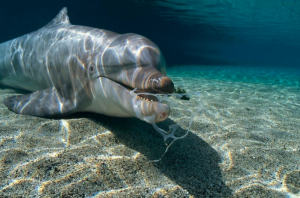
8. Paper alternatives you will discredit.
People will try to sell you paper bags and insist that the paper coffee cups are better than what’s currently being used on the market. Moving away from a plastic-full lifestyle doesn’t mean using paper for everything instead “because it’s better.” It most definitely is not: paper bags take up more space than their plastic counterparts in landfills and take just as much time to decompose because of the lack of light and air where they land. Paper bags also take 4 times as much time to manufacture and 91% more energy to recycle than plastic bags. And last but not least, paper bags generate more air and water pollutants. (source)
Phew. That’s a lot for a supposedly innocent paper bag.
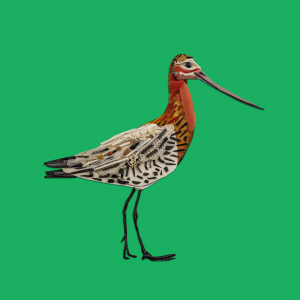
So, bring your own bags, ones you can reuse over and over and over again, that ideally don’t take major amounts of energy to manufacture. For example, even if organic cotton is by far a much better option than regular cotton, it is still a false friend: it takes at least 3 times as much water to make a tee-shirt with organic cotton than regular cotton. It’s becoming an issue in countries like India where people have to deal with water scarcity, and where the amount of water needed to make one tee-shirt could give a person to drink for 900 days. And for everything someone argues is “better” than plastic, do your research! Check out the “Resources” section at the end of this article for a little help.
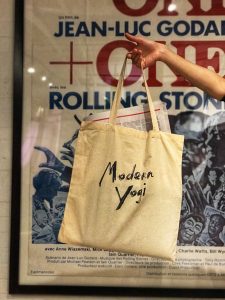
9. Every lifestyle habit you will rethink.
Whether you choose to target packaging or prefer to focus on avoiding single-use cups and straws, chances are you’ll have to create new habits for yourself and your household–or take your updated habits further. Instead of getting the premade salad sauce that comes in a plastic container, you’ll be making it yourself (and learning how to make it); instead of opening a bag of chips before dinner, you might go for the nuts you got at the bulk section.
That’s why having the option to take the challenge and transition together with others can help with the intimidating task of switching to a low or zero waste lifestyle–social media will be filled with tips and tricks, celebrations of the small victories, and people sharing their frustrations on the amount of resistance they see (*cough* like in New York City *cough* quite a wasteful city, which is surprising given the leading role it’s supposed to have in the world *cough*).

Having the option to take the challenge and transition together with others can help with the intimidating task of switching to a low or zero waste lifestyle.
Such a global event is an incredible opportunity to share the transition and feel less alone. Especially if you live in a place where your community isn’t aware of the environmental crisis our world is currently experiencing, being able to reach out to others on a regular basis to exchange ideas and concerns can be heart-warming and comforting. Check out the resources section for accounts and hashtags to follow.
“Though humankind is very far from constituting a harmonious community, we are all members of a single rowdy global civilization.” – Yuval Noah Harari, 21 Lessons for the 21st Century
And invite your surroundings to join in–yoga teachers, parents, community leaders; challenge everyone to pick one idea and stick with it.
10. To doing your best you will commit.
After all, we are only human–that’s probably how we got into this mess in the first place. There’s a lot we have to change in our world and initiatives like Plastic Free July make it easier for us to take little steps, one after the other, in the right direction. Committing to doing your best, taking action every day, and hoping for the best is the way to go.
Remember, the goal isn’t to replace plastic by another form of non-reusable material. The challenge is to make changes for the long run, where we don’t have to use our resources (energy, time, money) to make something that will soon become trash. Share your doubts, concerns, struggles, and victories along the way and invite your loved ones to join in.

About the Photo Artists
Norway-based beach plastic artists Kari Prestgaard and Astor Andersen pick up trash from European beaches and turn it into art. The photos featured in this article are from their project called Neither Fish nor Fowl, made to bring attention to the birds and fish who suffer due to marine pollution. If we don’t clean up our act, there may actually be neither fish nor fowl along our coastlines in the future…
All of these images were made with school children from 4th to 7th grade, during their tour on the west coast of Norway in 2018. They aim to inspire kids to take care of the ocean. At their workshops, children learn about the negative effects of plastic pollution through a positive, creative experience. After, they feel empowered and hopeful; they feel like they really can make a difference.
You can find them on Instagram and Facebook.
Kari and Astor’s number one tip for making a difference as you switch to a plastic-free life: “Get a GuppyFriend washing bag! Great investment, and you can wash all of your synthetic clothes without worrying about tiny microplastic waste going down the drain – and into the ocean. You’ll find them on Instagram @stopmicrowaste.”

Resources
Instagram Accounts & Hashtags
For hashtags, look for #ZeroWaste, #ZeroWasteLiving, or add any other area you could make changes in your lifestyle: home, food, travel, shopping, fashion, kids… Or even try adding your country.
To follow the movement during July and beyond, try #PlasticFreeJuly or #PlasticFree.
Here are my favorite accounts:
- Amelia Barnes @ameliakyoga: Winnipeg native, she’s the one I’ve been learning the most in my journey to zero-waste living. She shares the easiest techniques to make small adjustments and encourages kindness throughout the process. And she shares amazing amounts of information and research into the environmental impact our eating and consumption habits have.
- Kari Prestgaard and Astor Andersen @prestgaardandersen, whose art is featured in this article.
- Zero Waste Farmer @zerowastefarmer: the Kumar family created a bamboo toothbrush and on this account, you can find more ways to reduce plastic waste and ways to live consciously, in tune with the earth (such as eating according to the seasons).
- Global Footprint Network @globalfootprintnetwork, a research organization helping you understand the carbon impact of our activities on the planet. Look for the hashtag #MovetheDate refers to Earth Overshoot Day for tips to move it back! They created a test you can take to calculate your ecological footprint (mine isn’t too good yet, I fly too much…).
- Lindsay Miles @treadingmyownpath: Lindsay advocates for a low waste lifestyle in general, so you can expect to find talks about food waste and minimalism.
On Waste
World Bank Press Release. What a Waste: An Updated Look into the Future of Solid Waste Management. Accessed June 24th, 2019.
What a Waste 2.0: A Global Snapshot of Solid Waste Management to 2050. Downloadable pdf (overview or full book). Accessed June 24th, 2019.
We made plastic. We depend on it. Now we’re drowning in it. on the National Geographic.
Plastic Free July Organization, to learn more about the initiative, receive their tips and tricks, and download their stickers campaign illustrations.
The Ocean Clean Up Foundation, a goldmine of information on plastic pollution and its environmental, social, and economic impact. Make sure to check out the research and updates tab to learn through the foundation’s efforts.
Animation made by the Ocean Clean Up Foundation to give insight into the research conducted between California and Hawaii to learn about the extent of the Garbage Patch, its composition, and its effects on the environment.
Plastic Pollution: How Humans are Turning the World into Plastic, a video that explains the dangers of plastic for wildlife but also humans. Around 4’33, they explain microplastics, the kind of plastic the GuppyFriend washing bag recommended by Kari & Astor above prevents from getting into our waters.
The World Counts. Shocking environmental facts and statistics—live!
Cotton and Pesticides by the National Wildlife Federation
Why Insect Populations Are Plummeting and Why It Matters by the National Geographic
Farmworkers Plagued by Pesticides, Red Tape by The Center for Public Integrity
Your Organic Cotton T-shirt Might Be Worse for the Environment than Regular Cotton on Quartz.
Good on You, a platform that rates brands according to their ethics levels. This article, “How Can You Tell When a Fashion Brand Is Greenwashing?” is a must-read.
Treading My Own Path, the “recycling” archives to learn about the limitations of recycling. (by Lindsay Miles, mentioned above)
Bag it, a documentary on what happens to plastic once it’s thrown out. “Just because plastic is disposable doesn’t mean it just goes away. After all, where is away? There is no away.” Watch the trailer here.
Katharine Hayhoe’s TedxTalk on climate change encouraging all of us to talk about these important global issues through the lens of family, community, religion.
On Climate Change
What’s Climate Change? Simple questions, simple answers to shed light on a complex topic on the New York Times
Livestock and climate change: impact on livestock on climate change and mitigation strategies. Giampiero Grossi, Pietro Goglio, Andrea Vitali, Adrian G Williams. Animal Frontiers, Vol. 9, Issue 1, January 2019, PAges 69—76. Accessed June 24th, 2019.
Greenhouse Gas Emissions Data by the United States Environment Protection Agency
Greta Thunberg’s TedxTalk in Stockholm: The disarming case to act right now on climate change
All photos by Beach Plastic Artists Kari Prestgaard and Astor Andersen. Check out their Instagram account and Facebook page.
Edited by Sarah Dittmore
Updated post publication date to add resources on cotton crops.

